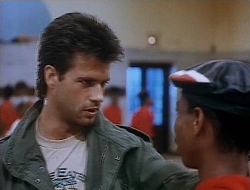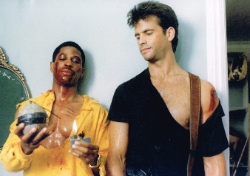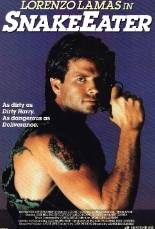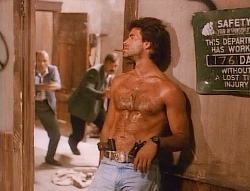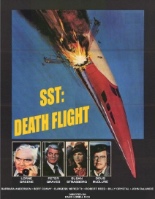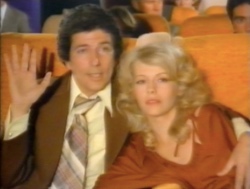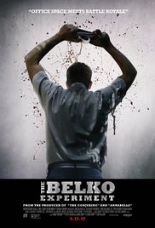
 According to the scientific method — which you would have learned in middle school, had you been paying attention — every experiment exists to test the validity of one’s hypothesis. For example:
According to the scientific method — which you would have learned in middle school, had you been paying attention — every experiment exists to test the validity of one’s hypothesis. For example:
• “Refrigerating food will extend its life of edibility.”
• “A brick falls faster than a feather.”
• “When you’re a star, they let you do it. You can do anything. Grab them by the pussy. You can do anything.”
• Or, in the case of The Belko Experiment, “If you lock 80 people inside an office building and tell them to kill, they totally will.”
From director Greg McLean (Wolf Creek) and screenwriter James Gunn (Guardians of the Galaxy Vol. 2), The Belko Experiment proves its hypothesis true, in brutally bloody fashion and with a palpable edge not often seen in mainstream movies.
 Some 80 men and women, most of them Americans, work in the high-rise corporate headquarters of Belko Industries in Bogotá, Colombia. Why is the film set in South America? Good question — and one McLean and Gunn do not answer; my suspicion is the foreign setting, coupled with the remote location of the offices, deliberately feeds into the audience’s fear of the unfamiliar “other.” Dorothy was right, you know: There is no place like home, where dozens of people aren’t actively trying to snuff your life, and even if they were, you’d at least know the perfect hidey-hole to sit out the chaos.
Some 80 men and women, most of them Americans, work in the high-rise corporate headquarters of Belko Industries in Bogotá, Colombia. Why is the film set in South America? Good question — and one McLean and Gunn do not answer; my suspicion is the foreign setting, coupled with the remote location of the offices, deliberately feeds into the audience’s fear of the unfamiliar “other.” Dorothy was right, you know: There is no place like home, where dozens of people aren’t actively trying to snuff your life, and even if they were, you’d at least know the perfect hidey-hole to sit out the chaos.
It’s tough to tell which startles the Belko workforce more: an intercom message demanding they kill a couple of colleagues within the half-hour or the steel walls that seal them inside a multifloored cage of cubicles. At first, they think the announcement might be a hacker’s prank. (But we know that’s not the case since the voice belongs to Gregg Henry — c’mon, we’ve all seen Body Double!) When the backs of a few heads begin to explode — and the bodies attached instantly slump to the lobby tile in sickening heavy thuds — they know this is no game.
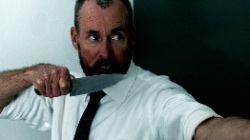 Well, in a manner most most macabre, it absolutely is a game — a Battle Royale among pencil-pushers and number-crunchers. Only one will be left standing, with luck, and it’s exactly who you think it will be, thanks to the movie’s early alignment with that character. Beyond that, however, the lack of marquee names ensures that in this bloodbath, anyone could be taking a dip. One of the Experiment’s strengths is its casting of reliable character actors, including John C. McGinley (Surviving the Game), Tony Goldwyn (2009’s The Last House on the Left), John Gallagher Jr. (Hush), Brent Sexton (TV’s The Killing) and Gunn favored player Michael Rooker (Slither). No one is particularly well-drawn before shit gets real; paying the larger price for that are the few ladies, notably Adria Arjona (TV’s True Detective) and Melonie Diaz (Ghost Team). For the latter’s character, it’s her first day — talk about a flawed onboarding experience!
Well, in a manner most most macabre, it absolutely is a game — a Battle Royale among pencil-pushers and number-crunchers. Only one will be left standing, with luck, and it’s exactly who you think it will be, thanks to the movie’s early alignment with that character. Beyond that, however, the lack of marquee names ensures that in this bloodbath, anyone could be taking a dip. One of the Experiment’s strengths is its casting of reliable character actors, including John C. McGinley (Surviving the Game), Tony Goldwyn (2009’s The Last House on the Left), John Gallagher Jr. (Hush), Brent Sexton (TV’s The Killing) and Gunn favored player Michael Rooker (Slither). No one is particularly well-drawn before shit gets real; paying the larger price for that are the few ladies, notably Adria Arjona (TV’s True Detective) and Melonie Diaz (Ghost Team). For the latter’s character, it’s her first day — talk about a flawed onboarding experience!
There is more to The Belko Experiment than just a high concept. As with his underseen 2010 film, Super, Gunn’s screenplay lulls you into its darkly comic world before pivoting into unrelenting violence — a tonal shift so swift and severe, you’re supposed to feel discomfort. Many viewers will check out long before the intended message — admittedly delivered sans subtlety — has time to sink in. Give it a shot! —Rod Lott


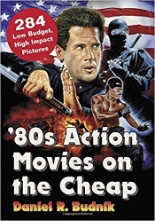
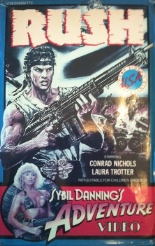
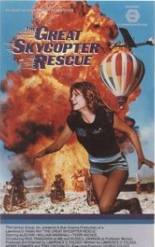
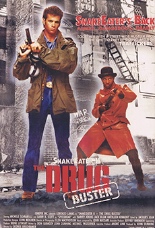
 Forever on suspension from the force, renegade cop Jack “Soldier” Kelly (Lorenzo Lamas,
Forever on suspension from the force, renegade cop Jack “Soldier” Kelly (Lorenzo Lamas, 